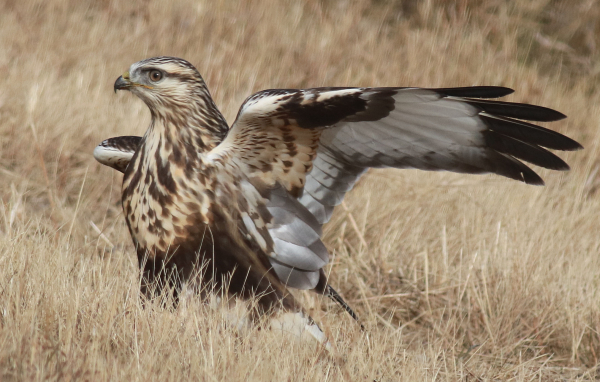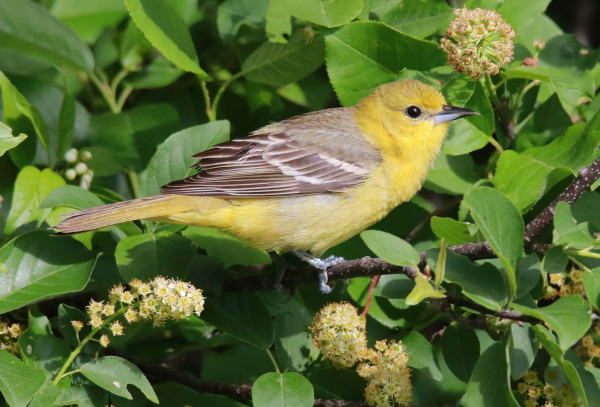With ever-cooling temperatures becoming the norm, soon to become freezing temperatures, I’ve found myself appreciating the warmth of my car’s heating system more and more during almost daily birding drives. Most readers already know the “secret” of a most useful and under-appreciated piece of photography equipment – the mobile blind. I have had a long succession of mobile blinds, but lately it is my small white car, my everyday mode of transportation beyond my legs and feet, and my everyday mode of transportation for birding beyond my neighborhood.

Living in the open landscape of rural North Dakota, it’s often important to cover a relatively expansive area to keep aware of subtle changes in the birds and their habitats, while searching for new photo sites and watching for the next photo subject. Overall, I find that birds and other wildlife are less likely to react to or flee from the cautious approach of a mobile blind or a parked vehicle, while a person on foot wielding a camera is likely to cause some birds, maybe most birds, to take flight. Yes, some birds become habituated to people walking by in a park or some nature centers or beaches, but in the wildlands of Dakota, you are more likely to interact with birds that rarely see people. And that’s the case in almost any rural setting, and it’s not to rule out using your vehicle as a blind in a town, city, or suburb – I’ve done that too along a city street.
Wherever I travel, from California to Florida, Maryland to Montana, an auto, truck, or van can become a mobile blind that allows the bird or birds to become more at ease during an approach and during a photo session. A real plus to a mobile blind is that you can often reposition, pulling forward or easing backward a few inches, a number of feet, or a hundred feet. You may also be able to turn a little right or left to get into a more open position, or re-position to a more promising location altogether.

While I often use my vehicle as a blind when I’m on the road, it is also a great stationary blind. When I find a location where interesting birds are active I like to park on the sunny side of the trees and bushes and wait for birds to pass by my position as they forage. But inn a mobile blind you are never really stationary; you can easily reposition forward and backward to get closer to active birds you see in another location – a few feet away, or a quarter mile ahead or behind you.
Any time you are parked in a photo position, there is a definite comfort level about using your vehicle as a mobile blind: It provides shade, and it reduces the brightness of the light that reaches your eyes that helps to reduce any vision stress; the mobile blind breaks the wind, shelters you from rain or snow, and keeps most bugs outside a partly open window. In a pinch, you can even turn on the heater or air conditioning to take the edge off temperature lows and highs.

Mobile Blind Photo Tips – While photographing from your vehicle, be sure to turn off the ignition to keep your camera lens as stable as possible and to keep things quiet. You can stabilize your lens by resting it on the top of your driver’s side window, or brace it against the side or top of the window frame to reduce any body shake that may be transferred as you hold your camera. Also, hold your breath as you press the shutter button to eliminate breathing motions for a moment. You can always cautiously step outside your vehicle to photograph when necessary, especially when your subject is flying, but you can still hide behind or beside your vehicle, or to blend into the outline of it. Move as little as possible, bend over if it helps keep you stay concealed, and never slam a door when exiting a vehicle. It’s also a good idea to move as little as possible inside the vehicle when a bird is in sight.
Of course, in advance of parking your vehicle, assess where the sunlight is originating and park so you can position within the vehicle so the sun is behind you and the bird or birds are in front of you – your shadow should be pointing at your subject. Also in advance, assess where you can park safely off the side of the road or in a turnout. Vehicle safety is always paramount when you see a bird you want to try to approach to photograph.

On the Road – I usually photograph along a lot of little-used rural roads at times of the day when very few people use them, but any time you use a vehicle to photograph birds along a roadway it requires a second level of safety. Wherever you are, it’s always necessary to be extra aware of any vehicles behind you and in front of you, and to make smart choices as to where it’s safe to slow down and pull over. Pull as far off the road as possible when photographing from your mobile blind, and double-check for other vehicles before slowly re-entering the roadway. Always be safety cautious for yourself and others.
If you see a potential photo op as you are driving, be especially aware of any vehicles driving behind you, and always make safety your first priority when photographing from a vehicle. Sometimes you may need to drive past a bird, find a safe place to pull over, then return to the bird’s location to try to photograph it when the coast is clear and you have evaluated the situation from a safety standpoint as well as a photography angle.

Using your vehicle, I encourage you to explore a more expansive area occasionally to monitor where the birds are, and where they aren’t. In my area, nature changes weekly, and the behavior of birds can change that quickly too, especially during late fall migration – now. Take advantage of photo opportunities you encounter during birding drives, short ones and others of longer duration. At the same time, plan for future photo opportunities with respect to the time of day the sun will best illuminate a promising area. As an example, if a marsh is on the west side of an area where you can park, plan your photo visit for the morning.
After mentioning fall, I want to provide another seasonal perspective on photographing birds from a mobile blind: A favorite period of spring migration is the last couple weeks of May, when a variety of smaller birds passes through my neighborhood. Then, I spend more time parked along the edge of a special grove of trees – Melody’s Grove. There I immerse myself in nature, breathing the super-fresh air, listening for bird songs, and tuning into the sights and sounds around me. My senses become hyper-acute to any movements, and to very subtle changes of temperature and wind, even to the varying hues of sunlight and shade. All this amid a heightened level of anticipation, and suspense; and then it happens, the surprise appearance of a colorful songbird – a Chestnut-sided Warbler, Orchard Oriole, Canada Warbler, or even a species I’ve never seen before, like my first Connecticut Warbler a few years ago.

However, it needn’t be a “rare bird;” any Yellow Warbler and Yellow-rumped Warbler is a treat, as are the Least Flycatchers, Warbling Vireos, and all the rest of the more common birds to break into view. As I’m waiting for the next bird, I tend to see the movement of any leaf; actually, any movement across my field of vision – until the next bird breaks into the plain of view – popping out of the leaves, low or high; or flying in to perch before me. It’s all soo fun, enjoyable, and often exciting, although there are also periods of quiet, sometimes nearing the advent of boredom, but then a bird appears and it’s on again.
During spring I enjoy similar experiences parked by the shore of a nearby marsh as a variety of sandpipers, ducks, and terns parade before me as I sit in a comfortable car seat with my camera and binoculars ready for action. In this way, you will find yourself spending a little extra time with each bird. Often with a few more moments of time, a bird that provides a fairly standard portrait photo will add a bit more action for you to document. Be a good observer, a conscientious bird photographer, a safe driver, and enjoy the time you spend photographing from your mobile blind.
Article and Photographs by Paul Konrad
Share your bird photos and birding experiences at editorstbw2@gmail.com